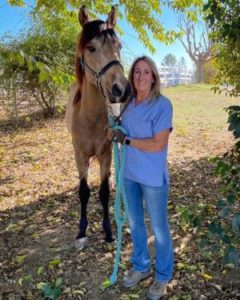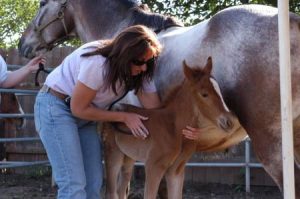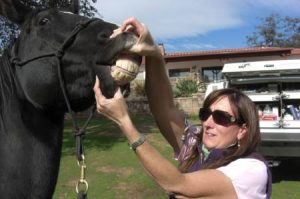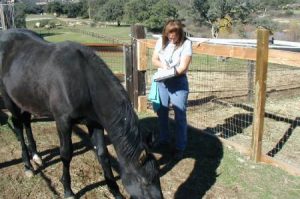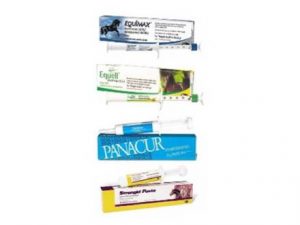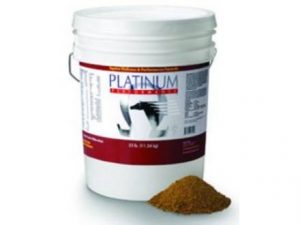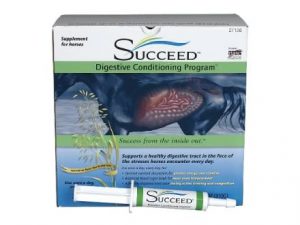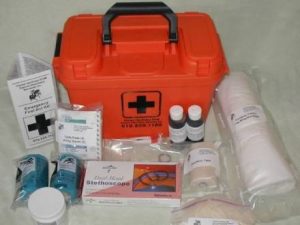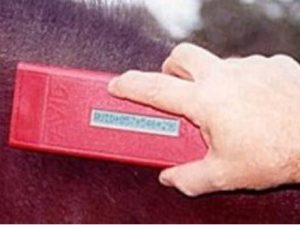Chronic obstructive pulmonary disease, or COPD, is a long-term, non-contagious illness that can cause severe respiratory distress in older horses. COPD primarily affects the lungs, and horses with the disease often are intolerant of exercise and suffer a decrease in overall performance. Symptoms commonly include frequent coughing spells and nasal discharge.
Because the underlying cause of COPD is usually an allergy, treatment requires removing COPD-causing allergens from the environment of a horse. Common allergens include dust, molds, hay, straw, pollens, as well as certain trees. When allergens cannot be eliminated from the horse's environment, medical therapy is often successful in alleviating a horse's respiratory symptoms.
Some horses are mildly affected during certain parts of the year. Clinical signs include periodic coughing spells, an accentuated expiratory effort, and wheezing. More severely affected horses can have a deep cough with mucopurulent, copious discharge that either is expelled from the nostrils or contained within the lower airways.
Some horses develop a "heave line" from prolonged respiratory dyspnea and become exercise intolerant. The horse may have flared nostrils and act nervous or anxious. Auscultation may reveal wheezes, crackles and increased lung sounds. Horses with secondary bacterial infections may develop a fever. Horses that are stabled indoors can suffer from sudden "asthmatic attacks" from dust and mold in the environment or feed, or from certain changes in the weather.
Most often caused by allergies, chronic obstructive pulmonary disease, or COPD, is a long-term, non-contagious disease that can cause severe respiratory difficulty and distress in older horses. Severely affected horses can suffer "asthmatic attacks" caused by the severe inflammation of the airways in the lungs. The disease typically worsens with age, as the horse's lungs begin to develop chronic and abnormal changes of the airways, which worsen over time with continued exposure to the offending allergens.
Treatment involves trying to minimize or eliminate any potential allergens from the affected horse's environment. Keeping the horse in a dust-free environment, or housing the horse outdoors or in a well-ventilated area, usually is helpful in decreasing the symptoms of COPD. Medical therapy may be necessary for horses that cannot be maintained in a dust-free environment, or for those that have clinical signs that cannot be controlled through proper environmental changes.
A thorough physical exam is performed on horses with clinical signs of respiratory difficulty or persistent coughing. The veterinarian will listen to the chest to detect abnormal lung sounds such as wheezes or crackles. Sometimes it is helpful to place a bag over the horse's muzzle to allow the horse to re-breathe carbon dioxide, causing the animal to take deeper breaths, which make the lung sounds louder and easier to hear.
Samples of the fluid and secretions in the trachea and lungs may be taken and evaluated under the microscope. Culturing this material may reveal an underlying bacterial infection. Allergy skin testing also can be done to determine if the horse is allergic to certain insects, feeds, and plants that may cause the symptoms of COPD. The examining veterinarian may need to draw blood and submit it to a laboratory for a diagnosis, or to rule out potential causes of disease.
It is important that the caretaker or owner of the horse notice the environment that the horse is kept in, and the beginning of any clinical signs of breathing difficulty or coughing. For example, the horse may become more ill when stabled in a barn, or the symptoms may grow more severe when the animal is out to pasture during certain seasons of the year. This kind of information will help a veterinarian diagnose the cause of the allergies.
The primary concern in treating horses affected with COPD due to allergies is keeping the horse away from the underlying allergens. If the horse is stabled and begins to develop respiratory difficulty and coughing, then it may be allergic to dust, hay, molds, or certain feeds, and should be kept outside, where these potential allergens are not present. If the horse has to be kept in barn, shredded paper should be used as bedding.
Some horses develop breathing difficulty during specific times of the year, or while outside on certain pastures, due to an allergy to certain plants or pollens. Stabling the horse in a barn with shredded paper for bedding instead of straw, or keeping the animal off pastures during the problematic seasons, may eliminate the incidence of the allergic reaction. To cut down on reactions to dust and mold, an owner may dampen the hay to settle dust, but should not allow it to sit for an extended period of time; otherwise, mold may form. Horses with severe allergies may not tolerate hay.
For horses that cannot be effectively managed by a minimization of contact with potential allergens, medical therapy is needed. Medications such as antihistamines, steroids, and bronchodilators have been used with varying results. Steroids usually help decrease the inflammation in the lungs and allow the horse to breathe more freely, but they are associated with some side effects, such as laminitis. Bronchodilators help open up or dilate the airways in the lungs. The examining veterinarian will be able to determine the best course of therapy, as well as which medications will be necessary to minimizing clinical signs of the disease

